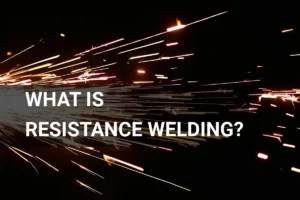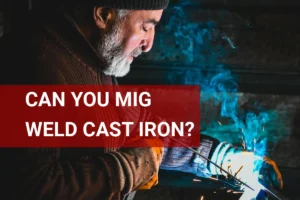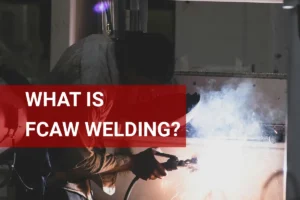How to Weld With Acetylene Torch? Explore Techniques, Benefits, and Steps
Published on: March 25, 2025 | Last modified: March 4, 2025
By: Joe Carter
An acetylene torch is a tool used for welding. It combines acetylene gas and oxygen to produce a flame hot enough to melt metal.
People are frequently curious about how to weld with acetylene torch. Mastering this technique is crucial because it can mean the difference between a strong weld and a failed project. From my own experience, following the right steps leads to better results and safer practice.
In this guide, I’ll cover how to use acetylene welding, the types of acetylene torches, prerequisites to keep in mind, and essential steps for welding with an acetylene torch. You’ll also learn about precautions, welding techniques, factors influencing the process, typical problems, and aftercare. By the end, you’ll understand the benefits and applications of acetylene welding too.
Contents
- How to Weld With Acetylene Torch?
- What is an Acetylene Torch?
- Types Of Acetylene Torch
- Prerequisites to Keep in Mind
- Precautions
- Steps for Welding With an Acetylene Torch
- Types Of Welding Techniques Used With Acetylene Torch
- Factors Influencing Welding With an Acetylene Torch
- Typical Problems to Be Aware Of
- Advanced Techniques for Acetylene Welding
- Benefits Of Welding With an Acetylene Torch
- Applications Of Acetylene Welding
- When to Try a Different Approach
- Frequently Asked Questions (FAQs)
- Conclusion
- Benefits Of Welding With an Acetylene Torch
- Applications Of Acetylene Welding
- When to Try a Different Approach
- Frequently Asked Questions (FAQs)
- Conclusion
- References
How to Weld With Acetylene Torch?
An acetylene torch is a tool that uses acetylene gas for welding. To weld, mix acetylene and oxygen, light the flame, and adjust the temperature, typically reaching over 3,200 °C (5,792 °F). It’s not too hard; great for pipe and metalwork.
What is an Acetylene Torch?
The acetylene torch, commonly used in welding, combines acetylene gas with oxygen. This setup creates an intense flame that reaches temperatures of about 3,500 degrees Celsius (6,332 Degrees Fahrenheit). The acetylene torch operates at a pressure of 0.2 to 0.4 bar (3 to 6 Psi). This high heat is suitable for tasks like cutting, brazing, and welding various metals.
Now, let’s discuss how to weld with an acetylene torch. It requires precise adjustments to your gas mixture; balance is essential for creating the right flame. From my experience, mastering this technique takes practice, but it’s rewarding once you get it right. You’ll start noticing the details that make your welds stronger.
Thinking back, I remember the first time I welded AC lines using an acetylene torch. It was nerve-wracking yet exhilarating! The realization of how to use acetylene welding transformed my metalworking process. This skill can be a game changer, especially for personal projects or repairs at home.
Types Of Acetylene Torch
What types of acetylene torches are used in welding?
Cutting Torches
Cutting torches slice through metal. To use this type effectively, adjust the acetylene and oxygen mix for a clean cut. Light the torch and aim for the desired point, keeping the flame’s inner cone in contact with the metal.
Welding Torches
Welding torches join metal pieces. Set the correct gas mix and control the flame’s temperature. Move the flame along the joint while adding filler rod for a strong bond.
Heating Torches
Heating torches provide localized heat for bending or shaping metal. Adjust the flame to a lower temperature, then apply it evenly to the metal in a back-and-forth motion until it reaches the desired malleability.
Inert Gas Mix Torches
Inert gas mix torches combine acetylene with inert gases to prevent oxidation. Set the gas flow correctly, start the flame, and ensure it’s neutral before applying it to the metal for clean welds.
Specialty Torches
Specialty torches have various designs for specific welding tasks. Follow the manufacturer’s guidelines for gas settings and torch angles to achieve the best results for your application.
We have now covered the different types of acetylene torches. Next, we will examine important prerequisites to consider.
Prerequisites to Keep in Mind
What do you need to start welding with an acetylene torch?
- Oxy-Acetylene Welding Kit: Look for a kit like the Harris 71-3. It includes essential components like regulators and hoses, crucial for safely operating your torch.
- Welding Rods: Use filler rods such as ER70S-2, necessary for proper melting during the welding process.
- Tip Cleaning File: Get a tool like the Harris 13-094. It keeps your torch tip clean for optimal performance and accuracy.
- Flame Arrestors: These safety devices, like the Victor 0634-1553, protect against flame backflow, critical for preventing accidents.
- Oxygen and Acetylene Cylinders: Ensure you have tanks, such as the Smith 0380, filled with the correct gas mixture. They create the high-temperature flame needed for effective welding.
You should now have a good understanding of key prerequisites. In the next part, we’ll discuss important precautions to consider.
Precautions
Let’s quickly discuss vital safety measures for welding with an acetylene torch.
- Protective Gear: Always wear goggles and a welding helmet with at least a shade of 5. I recommend the Miller 281007 Odyssey for solid eye protection. This prevents severe eye damage from flashes.
- Ventilate Workspace: Ensure proper ventilation to avoid dangerous gas build-up. Aim for 100 cubic feet per minute (CFM) using fans to keep the air fresh and safe.
- Check Equipment: Inspect hoses and connectors for leaks before starting. Use a soap-water solution; if you smell gas after 1 minute, turn it off. This reduces the risk of explosions.
- Fire Extinguisher Ready: Keep a Class B fire extinguisher nearby in case of flames. I’ve used the Amerex 256 for 2A:10B:C. This helps manage accidents and ensures quick responses.
Following these precautions keeps you safe. Trust me, it’s worth it!
We’ve wrapped up safety measures and precautions here. Next up, we’ll look at the steps for welding with an acetylene torch.
Steps for Welding With an Acetylene Torch
Now, we’ll cover the steps to weld effectively using an acetylene torch. Follow these carefully for the best results.
1. Set Up the Acetylene Torch
First, assemble your oxy-acetylene torch. Attach the oxygen and acetylene cylinders to the appropriate regulators. Ensure the connections are tight to prevent leaks. Aim for a pressure of about 0.5 to 1.5 bar (7 to 22 Psi) for acetylene and 1 to 3 bar (15 to 43 Psi) for oxygen.
After setting the pressure, crack open the acetylene valve slightly and ignite it with a flint lighter. Slowly open the oxygen valve to adjust the flame. You should create a neutral flame: a clear blue inner cone and a light blue outer envelope. This setup is critical for effective welding.
2. Prepare the Weld Area
Next, clean the area you’ll weld. Remove any rust, grime, or paint from the surfaces using a wire brush or grinder. Clean metal ensures a better bond and reduces contaminants. A clean workspace makes a significant difference!
Position your pieces so that they’re securely clamped. This stability is invaluable while you work. The gap size between pieces should ideally be 1.25 mm (0.05 Inches), allowing the molten metal to flow nicely.
3. Heat the Joint for Welding
Now, direct the flame at the joint in a circular motion. Focus on warming the edges of the metals until they reach a glowing red to yellow color, about 800 to 1,000°C (1,472 to 1,832°F). This ensures the base material is ready to join.
Once the metal is hot enough, add your filler rod. Push it into the molten puddle and let it melt into the joint. It’s important to wait for the right temperature before introducing the rod; adding it too early can lead to poor bonding.
4. Control the Welding Speed
Weld at a steady speed. Too fast risks weak joints; too slow creates excess material. Aim for about 2.5 to 4.5 cm/sec (1 to 1.8 Inches/sec). With consistent speed, you’ll achieve even heat distribution. Choosing the right shielding gas is essential for optimal welding outcomes, as it influences arc stability and penetration. Learn more about what gas is used for welding.
As you progress, adjust the flame as needed to maintain the neutral flame. If the puddle becomes too wide, pull back slightly. Keep it fluid; this part requires practice!
5. Cool the Weld Joint
After completing the weld, stop supplying heat and allow the joint to cool naturally in the air. Rapid cooling or quenching can lead to cracking or stress fractures. It typically takes 15 to 30 minutes to cool down safely.
Once it’s cooled, check the joint for any gaps or inconsistencies. A smooth seam indicates a good weld. If you see areas of concern, consider rewelding those spots.
We covered the steps for welding with an acetylene torch. Next, we will explore different welding techniques used with this torch.
Types Of Welding Techniques Used With Acetylene Torch
Let’s explore the different types of welding with an acetylene torch: Oxy-Acetylene Welding, Gas Welding Techniques, Butt Welds, T-joint Welds, and Fillet Welds.
Oxy-acetylene Welding
This technique uses oxygen and acetylene to produce intense heat, reaching around 3,500°C (6,332°F). It creates a clear molten puddle, ideal for fusing metals.
Gas Welding Techniques
Gas welding employs various gases to generate heat, often utilizing an oxy-acetylene setup. It’s effective for thin materials, with a low melt-in rate.
Butt Welds
Butt welding joins two pieces edge to edge, forming a strong seam. Ensure tight fitting of the surfaces, aiming for a gap of about 1/16 inch (1.6 Mm) for optimal fusion.
T-joint Welds
T-joint welds connect two pieces to form a ‘T’ shape. They are effective for structural applications. Proper positioning and a filler rod enhance strength.
Fillet Welds
Fillet welds create a triangular joint between two intersecting pieces. They’re ideal for lap joints and corners. Maintain a torch angle of about 45° for a smooth finish.
Factors Influencing Welding With an Acetylene Torch
What factors affect your acetylene welding results? Here’s a breakdown.
Gas Pressure
Gas pressure is critical, typically set between 5 to 10 psi (34 to 69 Kpa) for acetylene. Higher pressure generates a larger flame, which can cause burn-through on thinner materials.
Weld Material Thickness
Thicker materials require more heat, so adjust your torch accordingly. For example, welding ¼ in (6.35 Mm) steel may need a higher flame intensity than 1/8 in (3.18 Mm).
Distance From Flame
The distance between the torch and base metal affects heat concentration. I once made the mistake of holding the torch too far and ended up with poor fusion.
Ambient Temperature
Welding in cold conditions can cool your weld too quickly, causing brittle joints. Aim to work in temperatures above 50°F (10°C) for optimal conditions.
Operator Skill Level
Your skills matter! An experienced welder can adjust techniques based on heat and metal thickness, resulting in a clean finish.
Typical Problems to Be Aware Of
Now, let’s look at unique issues that can arise with an acetylene torch.
Backfires
Backfires can occur due to low pressure or a clogged tip. You can identify this by the sound and vibration. To resolve this, ensure the pressure is at 5 psi (34.5 Kpa) and clean the tip regularly.
Excessive Spatter
Excessive spatter often indicates improper settings. I once set the pressure too high. To fix this, aim for a short, neutral flame—adjusting the acetylene and oxygen ratios can help.
Poor Heat Control
Poor heat control can result from an improperly adjusted flame. Look for uneven welding beads. A simple fix is to tune your flame until it achieves a clean, stable appearance.
Inconsistent Flame
An inconsistent flame may indicate a blockage. Check your hoses for kinks or leaks. Replace faulty hoses immediately to ensure a continuous flow.
Fume Hazards
Fume hazards can occur while welding with an acetylene torch. You can identify this by the presence of smoke or chemical odors. Always use proper ventilation or a fume extractor to minimize exposure.
Advanced Techniques for Acetylene Welding
Ready to take your acetylene welding skills to the next level? Here are some advanced techniques to improve your results.
Weaving Technique
The weaving technique enhances joint strength. Instead of a straight line, move in a slight zig-zag pattern. This creates wider weld and better penetration. Keep the torch at an angle of about 10-15 degrees for optimal results.
Multi-Pass Welding
Multi-pass welding is essential for thicker materials. For example, when joining 3/8 in (9.5 mm) steel, you can use multiple passes to ensure enough heat and penetration. This approach spreads the heat evenly, improving weld quality.
Control Flame Size
Mastering flame control is vital. A smaller flame (a smaller inner cone) provides precision for detailed work, while a larger flame is suited for quicker tasks and thicker materials. Practice adjusting flames as needed for different projects.
Puddle Manipulation
Puddle manipulation allows for better joint filling. Once the base metal reaches a molten state, adjust your torch movement to control the puddle size. For instance, hold the puddle slightly longer as you add filler, ensuring a good bond.
Use of Filler Rods
Choosing the right filler rod is crucial! Use ER70S-2 for mild steel or ER4047 for aluminum. Consider the application, as different metals require specific rods for optimal performance.
Here’s a quick comparison of common filler rods:
| Filler Rod Type | Material | Best Applications | Notes |
|---|---|---|---|
| ER70S-2 | Mild Steel | General purpose, automotive | High strength and good ductility |
| ER4047 | Aluminum | Aerospace, automotive | Great for filling and good flow |
| ER308L | Stainless Steel | Fabrication, food industry | Corrosion-resistant, low carbon |
| ER5356 | Aluminum Mg Alloy | Marine applications | Excellent corrosion resistance |
Benefits Of Welding With an Acetylene Torch
The acetylene torch provides precise control over heat output, making it especially effective for thin materials that require accuracy.
Additionally, acetylene welding offers several benefits: it heats quickly, allows for flexibility, works on various metals like steel and aluminum, and is cost-effective. These advantages make it a preferred choice for both professionals and DIYers. If you are considering powering welding equipment, understanding what size generator to run a 140 amp welder is crucial for optimal performance.
Applications Of Acetylene Welding
I’ve used acetylene torches for various projects, and they have many applications, such as:
- Repairing Gas Lines: Acetylene welding is ideal for repairing gas lines, as it creates a strong, secure bond. It’s popular because safety is crucial in this area.
- Automotive Repair: Many auto shops use acetylene torches to weld vehicle frames and exhaust components. The heat fuses metals quickly, making it a preferred method.
- Pipelines Construction: Acetylene welding efficiently joins large steel pipes in pipeline projects. Its effectiveness in high-pressure environments makes it widely favored across industries.
- Metal Art Fabrication: Artists use acetylene welding to create intricate metal sculptures. The torch’s versatility allows for delicate and complex designs.
When to Try a Different Approach
There are solid alternatives to get the same results without using an acetylene torch. You might consider MIG (Metal Inert Gas) welding, which uses a continuous wire feed and a shielding gas like argon or CO2 for better control and less cleanup. Products such as the Lincoln Electric Power MIG 210 MP are great for various welding tasks at home. If you’re on a budget, exploring a list of the best cost-effective MIG welders can help you find a suitable option.
A basic semiautomatic welding system typically includes several essential components that work together efficiently, which you can explore in more detail through this basic welding system guide.
TIG (Tungsten Inert Gas) welding is another excellent option, especially for thinner materials where precision matters. For example, the Hobart Handler 140 is a top choice for small to medium jobs and is user-friendly for beginners. Having navigated similar challenges before, I find these alternatives can simplify your welding projects. If you’re looking to enhance your skills with more advanced techniques, you might find it beneficial to explore how to weld overhead.
Properly applying a hot pass improves weld strength and ensures a smooth finish, and understanding a hot pass in welding is crucial for optimal results.Frequently Asked Questions (FAQs)
Here are some questions I typically get asked about acetylene welding.
Do You Turn Oxygen or Acetylene on First?
For acetylene welding, you should always turn on the acetylene before the oxygen. This prevents any flashback and maintains a stable flame. A quick tip: always open the acetylene valve about 1/8 of a turn, then adjust the oxygen as needed for your weld quality.
Do You Need a Welding Mask for Oxy-acetylene Welding?
Yes, you need a welding mask for oxy-acetylene welding. This protects your eyes from harmful UV rays and intense light. Remember, a shade 5 or 6 filter is generally suitable for most oxy-acetylene welding tasks to ensure your safety.
What is the Procedure to Use an Oxy-acetylene Torch in Welding?
The procedure for using an oxy-acetylene torch in welding starts with setting up your equipment safely. Attach hoses securely, open the acetylene valve first, ignite, then adjust the oxygen. Following the steps of oxy-fuel welding will help you create the right flame for your welding task. Always remember to wear proper safety gear.
Is Oxy-acetylene Welding Hard?
No, oxy-acetylene welding isn’t hard, but it takes practice. Beginners can start with basic welding techniques to gain confidence. With consistent practice, most people can become proficient within a few weeks, depending on their dedication and the complexity of projects.
What is Acetylene Welding?
Acetylene welding is a process that uses acetylene gas combined with oxygen for welding. It’s one of the oldest methods, allowing for high heat reaching around 3,200°C (5,792°F). This intense heat makes it suitable for welding various metals, from mild steel to copper.
Conclusion
We are almost done. We covered what an acetylene torch is, the different types, prerequisites, and steps for welding. We also discussed precautions, welding techniques, factors influencing your work, common problems, aftercare, and applications. Plus, we touched on when to consider other approaches.
I trust these insights have been helpful. In simpler terms, to weld with an acetylene torch, ensure you follow proper steps, precautions, and techniques. Remember, the right settings for pressure (Usually Around 5 Psi), and safe handling can lead to effective acetylene welding for various applications, like automotive or metal art.
Benefits Of Welding With an Acetylene Torch
The acetylene torch provides precise control over heat output, making it especially effective for thin materials that require accuracy.
Additionally, acetylene welding offers several benefits: it heats quickly, allows for flexibility, works on various metals like steel and aluminum, and is cost-effective. These advantages make it a preferred choice for both professionals and DIYers. If you are considering powering welding equipment, understanding what size generator to run a 140 amp welder is crucial for optimal performance.
Applications Of Acetylene Welding
I’ve used acetylene torches for various projects, and they have many applications, such as:
- Repairing Gas Lines: Acetylene welding is ideal for repairing gas lines, as it creates a strong, secure bond. It’s popular because safety is crucial in this area.
- Automotive Repair: Many auto shops use acetylene torches to weld vehicle frames and exhaust components. The heat fuses metals quickly, making it a preferred method.
- Pipelines Construction: Acetylene welding efficiently joins large steel pipes in pipeline projects. Its effectiveness in high-pressure environments makes it widely favored across industries.
- Metal Art Fabrication: Artists use acetylene welding to create intricate metal sculptures. The torch’s versatility allows for delicate and complex designs.
When to Try a Different Approach
There are solid alternatives to get the same results without using an acetylene torch. You might consider MIG (Metal Inert Gas) welding, which uses a continuous wire feed and a shielding gas like argon or CO2 for better control and less cleanup. Products such as the Lincoln Electric Power MIG 210 MP are great for various welding tasks at home. If you’re on a budget, exploring a list of the best cost-effective MIG welders can help you find a suitable option.
A basic semiautomatic welding system typically includes several essential components that work together efficiently, which you can explore in more detail through this basic welding system guide.
TIG (Tungsten Inert Gas) welding is another excellent option, especially for thinner materials where precision matters. For example, the Hobart Handler 140 is a top choice for small to medium jobs and is user-friendly for beginners. Having navigated similar challenges before, I find these alternatives can simplify your welding projects. If you’re looking to enhance your skills with more advanced techniques, you might find it beneficial to explore how to weld overhead.
Properly applying a hot pass improves weld strength and ensures a smooth finish, and understanding a hot pass in welding is crucial for optimal results.Frequently Asked Questions (FAQs)
Here are some questions I typically get asked about acetylene welding.
Do You Turn Oxygen or Acetylene on First?
For acetylene welding, you should always turn on the acetylene before the oxygen. This prevents any flashback and maintains a stable flame. A quick tip: always open the acetylene valve about 1/8 of a turn, then adjust the oxygen as needed for your weld quality.
Do You Need a Welding Mask for Oxy-acetylene Welding?
Yes, you need a welding mask for oxy-acetylene welding. This protects your eyes from harmful UV rays and intense light. Remember, a shade 5 or 6 filter is generally suitable for most oxy-acetylene welding tasks to ensure your safety.
What is the Procedure to Use an Oxy-acetylene Torch in Welding?
The procedure for using an oxy-acetylene torch in welding starts with setting up your equipment safely. Attach hoses securely, open the acetylene valve first, ignite, then adjust the oxygen. Following the steps of oxy-fuel welding will help you create the right flame for your welding task. Always remember to wear proper safety gear.
Is Oxy-acetylene Welding Hard?
No, oxy-acetylene welding isn’t hard, but it takes practice. Beginners can start with basic welding techniques to gain confidence. With consistent practice, most people can become proficient within a few weeks, depending on their dedication and the complexity of projects.
What is Acetylene Welding?
Acetylene welding is a process that uses acetylene gas combined with oxygen for welding. It’s one of the oldest methods, allowing for high heat reaching around 3,200°C (5,792°F). This intense heat makes it suitable for welding various metals, from mild steel to copper.
Conclusion
We are almost done. We covered what an acetylene torch is, the different types, prerequisites, and steps for welding. We also discussed precautions, welding techniques, factors influencing your work, common problems, aftercare, and applications. Plus, we touched on when to consider other approaches.
I trust these insights have been helpful. In simpler terms, to weld with an acetylene torch, ensure you follow proper steps, precautions, and techniques. Remember, the right settings for pressure (Usually Around 5 Psi), and safe handling can lead to effective acetylene welding for various applications, like automotive or metal art.
If you want to explore more about the world of welding, feel free to visit What is Welding for additional information and resources.
References
- ISO. (2017). ISO 3834: Quality Requirements for Fusion Welding of Metallic Materials. Geneva, Switzerland: ISO.
- American Welding Society. (2020). AWS A3.0: Standard Welding Terms and Definitions. Miami, FL: AWS.
Joe Carter is a retired welding professional with over 40 years of hands-on experience in the industry, spanning ship repair, structural welding, and even underwater projects. Joe is a master of MIG, TIG, and Stick welding. Passionate about mentoring the next generation of welders, Joe now shares his decades of expertise and practical insights to help others build rewarding careers in welding.
Acetylene Torch, American Welding Society, Construction, Metalworking, Oxy-acetylene Welding, Safety Precautions, Welding, Welding Equipment, Welding Techniques







